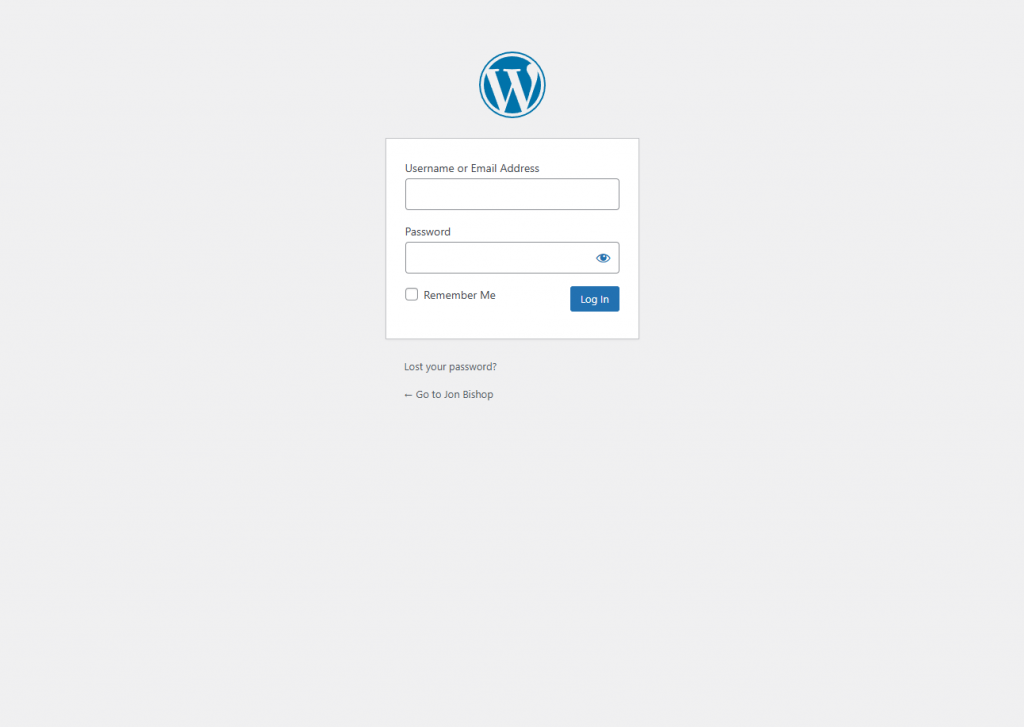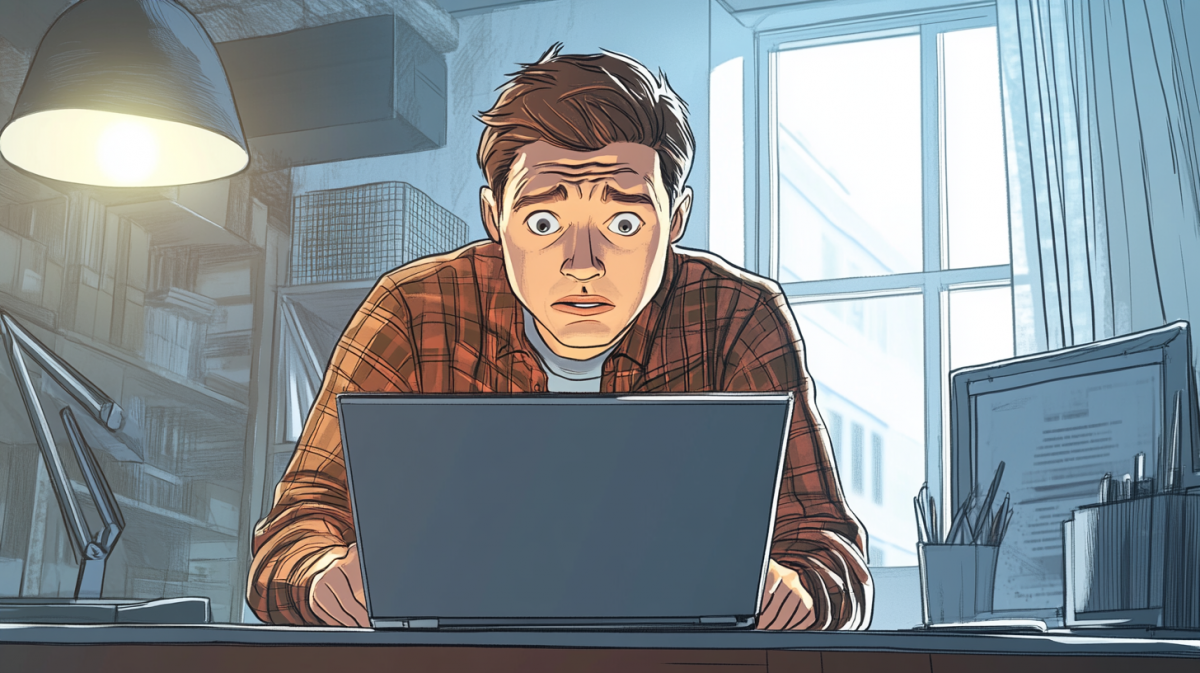If you’re a business owner and you can’t remember where your WordPress website is hosted, who set it up or even who owns the domain name, you’re not alone. I’ve had countless conversations with clients who paid thousands for a website only to find out years later they have no login credentials, no hosting access and no idea who owns the actual site.
This guide is designed to help you get control back.
Understand the Key Parts of a WordPress Website
Before you start tracking anything down, it’s important to understand the basic components of a WordPress website. This makes it easier to pinpoint what you’re missing and who you need to contact.
1. Domain Name
This is your website’s address, like yourcompany.com. It’s registered through a domain registrar like GoDaddy, Namecheap or Google Domains.
Whoever registered the domain controls where your site points. If you don’t control your domain, you don’t control your online brand.
2. Web Hosting
This is where your website lives. Hosting providers like Bluehost, SiteGround or WP Engine store the files that make up your website and serve them when someone visits your domain.
You need access to the hosting account to:
- Install or update WordPress
- Add or modify files
- Set up backups
- Migrate or upgrade your website
3. WordPress Installation
WordPress is the software that powers your website. It can be installed on any host. You log into the admin panel (usually via yourcompany.com/wp-admin) to make updates.

So when someone says “WordPress is your site,” that’s only part of the picture. Without your domain or hosting info, WordPress itself won’t help much.
Helpful Tip
Just because you can log into WordPress doesn’t mean you own your website. You need access to the domain and hosting too.More on setting up speedy WordPress hosting: How to speed up your WordPress site.
Why Some Website Changes Require Server or Domain Access
You might be able to update some content via WordPress, but many changes require access beyond the admin panel.
Examples:
- DNS changes: You need domain registrar access to update DNS records (e.g. for email, migrating hosts and sometimes to prove ownership with other services).
- Site speed and caching: These depend on server configuration.
- Plugin or theme conflicts: Sometimes you’ll need SFTP or file manager access to fix critical errors.
- Malware removal: Infected WordPress sites often need server-level cleanup tools.
If a freelancer or agency built your site and never transferred ownership, you’re at their mercy for anything beyond simple content edits.
How to Find Your Domain and Hosting Info
Here’s a practical checklist to figure out who owns what and how to take back control.
1. Search for Domain Ownership with WHOIS
Go to a WHOIS lookup tool like:
Enter your domain. You’ll see:
- Registrar (e.g. GoDaddy, Tucows, Google Domains)
- Registration date
- Contact email (sometimes obscured with privacy protection)

Helpful Tip
If you see an email that looks like “proxy@domainsbyproxy.com”, your domain uses privacy protection. Ask your developer or previous agency what email was used to register it.This is common with GoDaddy-registered domains.
2. Check Domain DNS Records
Use a tool like https://mxtoolbox.com or https://dnschecker.org to view DNS records. Look at:
- A Record: Points to your server’s IP address
- MX Records: Point to email service providers
- NS (Name Servers): Identify your hosting provider
If your nameservers are something like ns1.bluehost.com, your site is probably hosted with Bluehost.
3. Check Your Website’s Source Code
Right-click on your website and choose View Page Source (or press Ctrl+U on Windows / Cmd+Option+U on Mac). Then use Ctrl+F or Cmd+F to search for these telltale signs:
Look for Hosting Clues
Many managed WordPress hosts add identifiable strings, comments or scripts. Some examples:
cdn.wpengine.comorenv.wpengine.com- This typically means your site is hosted on WP Engine
flywheel:in<meta name="generator" content="Flywheel...">- Likely hosted with Flywheel, especially if you also see
flywheel-sites.comURLs
- Likely hosted with Flywheel, especially if you also see
kinsta-cdn.com- Indicates your site uses Kinsta’s CDN, meaning it’s probably hosted there
pantheonsite.ioin asset URLs- Suggests Pantheon is hosting your site or staging environment
*.pressablecdn.com- Common on sites hosted by Pressable, Automattic’s managed WordPress hosting
Bonus: Hidden Clues in Comments
Look for HTML comments left behind by developers, hosts or page builders. For example:
<!-- Hosting provided by SiteGround -->
Yes, many hosts will literally insert their name in the code.
4. Ask Former Developers or Agencies
If you hired a freelancer or marketing agency to build your site, check old emails, invoices or contracts. You’re looking for:
- Domain registrar login info
- Hosting platform details
- WordPress admin credentials
If they used their own accounts to set things up, you need to request a transfer of ownership.
Helpful Tip
Always insist on owning your own hosting and domain accounts, even if a developer sets them up for you.This keeps your business in control long-term.
Common Hosting and Domain Registrars to Check
If you’re not sure where to start, these are the most common platforms business owners forget they signed up for:
Popular Domain Registrars:
- GoDaddy
- Namecheap
- Google Domains
- Network Solutions
- Bluehost (some offer bundled domain + hosting)
Popular Hosting Providers:
- Bluehost
- SiteGround
- HostGator
- WPEngine
- Flywheel
- DreamHost
Helpful Tip
If you’re looking for fast, secure managed WordPress hosting with excellent support, WPEngine is one of the most trusted options for business websites.I use WPEngine for several client projects where performance and reliability are a top priority.
Check your credit card statements or email for old receipts with any of these names.
What If You Can’t Recover Access?
If you’re completely locked out of your domain and hosting, here are your options:
1. Domain Recovery
Contact the registrar shown in WHOIS. Provide proof of ownership (business registration, ID, trademark documentation). Sometimes you can reclaim a domain if you prove it belongs to your business.
2. Hosting Takeover
If you can prove you own the domain and site content, hosting companies may help migrate your site to a new account. You’ll often need DNS control to redirect the site.
3. Rebuild from Scratch
If the domain is unrecoverable, you may have to:
- Register a new domain
- Build a new WordPress site (you can often copy content from cached versions on Archive.org)
- Redirect traffic if possible
Helpful Tip
Use Archive.org’s Wayback Machine to recover lost pages or content if your original site is down.Visit: web.archive.org
Steps to Protect Your Website Going Forward
Once you’ve regained access, secure your digital assets so you don’t lose control again.
1. Register Everything in Your Name
Use your business name and email for:
- Domain registration
- Hosting account
- WordPress admin account
2. Store Credentials Securely
Use a password manager like Bitwarden or 1Password to store:
- Domain registrar logins
- Hosting credentials
- FTP details
- WordPress admin info
3. Set Up Backups and Monitoring
Automate regular backups and monitor uptime with tools like:
- VaultPress
- BlogVault
- WPEngine’s backup tool
This ensures you can recover quickly if anything goes wrong.
4. Assign Roles, Not Ownership
If you hire developers, give them user roles, not ownership, of your accounts. That way they can work on your site without locking you out. I’m not going to lie, I love that all of my clients trust me enough to just share their personal credentials, but this should not be the norm. A few extra steps can often protect your site and your brand for the long run.
Final Thoughts
It’s surprisingly common for businesses to lose track of their website’s ownership. The more time that passes, the harder it gets to untangle who owns what.
If you’re reading this and thinking “I don’t know who owns my site,” make this your sign to investigate now.
Control of your domain and hosting isn’t just technical housekeeping, it’s your brand’s foundation online. If you can’t access it, you don’t own it.
And if you need help tracking it all down or rebuilding what you’ve lost, reach out. I’ve helped businesses in this exact situation and I’d be happy to help you get back on solid ground.

